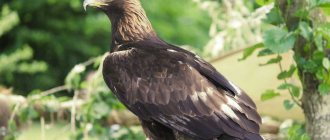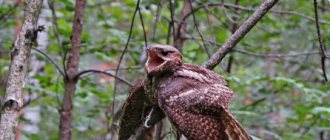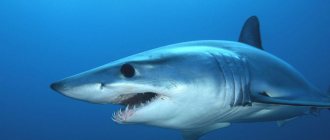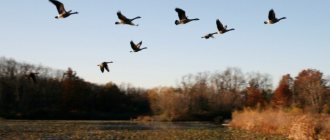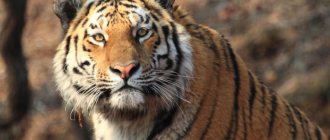The fastest bird on earth - what is it? When it comes to speed, birds are divided into two categories: maximum speed in horizontal flight, which varies depending on body weight and acceleration, and dive speed. By the way, in the latter case the birds do not fly, but are in free fall. Below is a rating of 10 birds with the highest flight speed.
The bird dives at high speed
Peregrine Falcon
Flight speed during a dive is up to 322 km per hour.
It is both the fastest animal on the planet and the most common bird of prey. Has excellent vision and lightning-fast reactions. Peregrine falcons are monogamous and prefer to lead a sedentary lifestyle.
Peregrine falcon looks out for prey
Interesting facts about the flight of the peregrine falcon:
- The peregrine falcon hunts either from ambush or flies low over the ground, scaring off its prey.
- If a peregrine falcon sees a prey in the air, it first gains altitude, and then, folding its wings, falls down “like a stone.”
- The impact of a dive is so strong that the victim's head can fly off. If the blow is not so strong, the peregrine falcon will bite the cervical vertebrae of the prey.
Golden eagle
Flight speed during a dive is up to 320 km per hour.
The bird is able to rotate its neck 270 °C and see prey from a height of 2000 meters. Another feature of the golden eagle is that it distinguishes colors.
The golden eagle can distinguish colors
Distinctive features of the golden eagle are:
- The hunting technique depends on weather conditions: if it is sunny, then the bird looks for prey in the air, and if it is cloudy, then from an ambush.
- It develops its maximum hunting speed during a dive.
Merlin
Flight speed during a dive is up to 209 km per hour.
Gyrfalcons are powerful birds that help control animal populations and maintain balance in the ecosystem in which they live. Rare predators dare to attack them. Gyrfalcons prefer to lead a solitary lifestyle, except during breeding time. Due to the huge cost of the bird abroad - 30 thousand dollars, in Russia, despite criminal penalties, catching gyrfalcons is popular.
The gyrfalcon can live up to 20 years
Hunting in the air, it quickly dives towards the victim and, folding its wings, grabs it with its paws, and kills it by biting the back of the head or breaking the spine.
External description
The wings of swifts are pointed. In flight, such wings closely resemble a sickle. The tail is small, with a slight fork at the end.
The beak is short and black. The bird weighs very little, only 90-110 grams. The bird's body reaches 18 cm in length and 40 cm in width with a full wingspan.
The swift's wingspan is 40 cm
The feathers have a black-brown tint, which can turn green in the sun. In general, the plumage is very inconspicuous, which helps the bird to remain inconspicuous and survive.
There is a light gray spot on the bird's chest, but it can only be seen from a very close distance.
The plumage of this bird is the same in both sexes. The older you get, the richer the color of the plumage becomes, and the younger the bird, the grayer it looks.
The description of the young is also characterized by a pale milky edge on each feather, which overall makes the bird slightly lighter than its older brothers.
The swift has large eyes that help it search for food
Important! In the photo, the swift looks a bit like a dove. Perhaps this is what distinguishes it from its inconspicuousness, because today this bird is not uncommon in urban areas, but people are unlikely to remember the last time they saw a swift or even what this bird looks like. By the way, it rarely goes down to the ground level or the first floors in the city, and therefore it is much easier to see it from a window on higher floors.
Finally, it is the swifts that usually begin to scream loudly in the spring. This is how they notify everyone around them that warmer times have come.
As a rule, swifts fly to approximately the same place to nest. They have an excellent memory, and therefore you should not be surprised that after winter a family of swifts will again settle on their favorite tree or in a crack under the roof.
Spine-tailed Swift
Speed in horizontal flight is up to 160 km per hour.
The bird is poorly studied. She never lands on the ground - at least no one has seen this, but in the air she tries to stay in the flock. This type of swift is a migratory bird that flies to Australia for the winter. Its flight is combined: frequent flapping of wings, followed by gliding. Compared to other swifts, it is a silent bird.
The needle-tailed swift is the fastest in horizontal flight
The swift hunts either above the water surface or by flying in the ground layers, but at a distance of at least 1 meter from the ground. Flying over the water, swifts not only feed, but also swim. The swift's food includes insects: dragonflies, beetles, ladybugs, bumblebees, wasps, etc. Birds feed during the day or evening.
Dive | speed 116 km/h
Pochard - a large waterfowl duck - opens the ranking of the fastest birds on the planet. With a body length of 48 to 56 cm and a weight of up to 1.5 kg, the dive is capable of speeds in the air of up to 116 km/h. Its flight is distinguished by ease and longer duration than others from the duck family. In addition, the duck runs quite fast and swims well. This species is widespread in Central, Central Asia and Western Siberia. These birds prefer to settle next to fresh water bodies overgrown with reeds. The main food of the duck is seeds, aquatic plants, shellfish, and fish.
Hobby
Speed in horizontal flight is up to 160 km per hour.
The bird is very similar to the peregrine falcon, but is smaller in size and has reddish legs. Sensing danger, the hobbyhorse emits a sharp and loud cry, although the rest of the time it prefers to remain silent. The bird has a cool and cocky disposition. He is hostile towards other birds, and especially those that fly past his nest, so he perceives them as a snack.
Hobbies eat insects and small birds
The hobby eats large insects, such as butterflies and dragonflies, as well as small birds - sparrows, starlings and swallows. It eats insects on the fly, and carries larger prey to a tree and spends its meal there.
Frigate
Speed in horizontal flight is up to 150 km per hour.
These birds are extremely skilled fliers, but are clumsy on the ground. The frigate is such a skilled hunter that he can catch a flying fish! However, it often takes prey from other aquatic birds, and on land it can snatch other people’s chicks directly from the nest.
The female has a white belly, and the male has a red throat pouch
Frigates spend most of their time above the water surface and soar without moving their wings for a long time.
Teal-whistle
The smallest of the dabbling ducks is the teal. Its weight is only 400–450 grams, and its length is about 35 cm. It lives in the northern regions of the Eurasian continent and on the islands near it.
Male teal can be distinguished by their more elegant coloration
Teal fly almost silently, developing an average speed of 80–90 km/h.
Teals are flocking birds
Grey-headed albatross
Speed in horizontal flight is up to 147 km per hour.
Due to the decline in the number of these birds, the International Union for Conservation of Nature classifies the grey-headed albatross as a vulnerable species. For example, its population on Bird Island has decreased by 30% over the past 30 years.
The grey-headed albatross is a good diver
Its peculiarity is that the bird can fly at maximum speed for a long time - up to 7-8 hours.
The largest bird of prey in the world
The harpy rightfully deserves this title. There are three harpies found in nature: Guiana, New Guinea and the world's largest South American. The distance between the spread wings of this predator reaches 220 cm, and it weighs approximately 12 kg. The harpy lives in the tropics of America.
The harpy's main weapon is its sharp claws, reaching 13 centimeters in length. This beauty is able to see a coin at a distance of 200 meters. These large birds can be considered killing machines, as they can accelerate up to 80 km/h.
Today there are less than 50 thousand individuals left in the world, so this bird species is under protection.
Spur goose
Speed in horizontal flight is up to 142 km per hour.
A usually silent bird that can emit a quiet whistle when flying. Runs well on the ground, reminiscent of a heron's movements. The birds got their name from the presence of a spur containing poison in the area of the wrist fold of the wings.
The spur goose can only be seen in Africa
This bird is the fastest goose in the whole world.
Medium merganser
Speed in horizontal flight is up to 129 km per hour.
A bird that practically does not lead a sedentary lifestyle and has an interesting mating ritual with immersing its head in the water, splashing and flapping its wings.
The male merganser has an impressive appearance
The merganser is the champion in high-speed flight in its duck family.
White-breasted American Swift
Speed in horizontal flight is up to 124 km per hour.
This bird is poorly studied. It is currently unknown how it reproduces and where, or how long the white-breasted American swift lives. Until 2000, the bird had a conservation status as “vulnerable,” but now its numbers are not threatened.
Swifts fly very fast
Swifts are one of the fastest birds in horizontal flight. It is not surprising that our rating included representatives of the same family. The difference in speed depends on the characteristics of each type.
Largest wingspan in birds
There are many birds in the world, one of the main characteristics that distinguish them is their wingspan. Scientists have long been interested in records, so let's talk about the birds with the greatest distance between their outstretched wings.
wandering albatross
The record holder for wingspan was a unique seabird, reaching 117 centimeters in length. The average lifespan of a wandering albatross is 10-30 years. The muscular wingspan reaches 363 centimeters, which is 3 times larger than its body.
Tristan albatross
The Tristan da Cunha archipelago, located in the South Atlantic Ocean, is home to the Tristan albatross, which has a wingspan of 350 centimeters, allowing it to glide remarkably through the sky. The plumage of the Tristan albatross is very similar to the wandering albatross. Today this species is on the verge of extinction.
Amsterdam albatross
Another large representative of albatrosses is the Amsterdam albatross. The distance between its outstretched wings is only 10 centimeters less than that of the Tristan albatross. These beauties live exclusively on the Amsterdam Islands. With approximately 100 individuals left in the world, they are considered an endangered species.
Interesting Facts
In the article we talked about the fastest birds, and below we offer you to familiarize yourself with interesting moments from their life:
- Having caught prey, peregrine falcons eat only the body - the legs, head and wings remain untouched.
- Having noticed the prey, the golden eagle grabs it either on the ground or while taking off. Holding the body of the prey with one paw and the head with the other, the golden eagle tries to break its spine.
- The enemies of gyrfalcons in their natural environment are golden eagles that attack them and crows that steal their chicks and eggs.
- The frigatebird is a kleptoparasite, meaning it pecks at other birds in order to force them to regurgitate its food, which it grabs before it hits the water.
- Cheglok considers the train as his assistant: he flies behind the train and catches birds, which the roar of the train scares away from a secluded place.
We invite you to watch a short video that will tell you even more interesting facts about the fastest bird that leads the world Top 10 - the peregrine falcon.
Birds always fascinate people with their flight - slow or fast, it makes us raise our heads and watch this amazing spectacle.
Fastest land bird
Do you know what the largest bird is, and also one of the fastest? Of course it's an ostrich. If the birds sense danger, they are capable of accelerating up to 70 km/h, their step width when running is 4-5 m. The height of the ostrich reaches 2.5 meters and weighs 150 kg.
The ostrich is a flightless bird with a dense build, an elongated neck, large beautiful eyes and long fluffy eyelashes. What else is characteristic of ostriches? A wide, large beak, underdeveloped wings, and strong hind limbs, thanks to which they run at such speed. Despite the fact that the plumage is equally even throughout the body, there is a bare area on the chest, and it is on this that the ostrich rests when lying on the ground. The main difference between females and males is size and color. Males have brighter plumage and are slightly larger in size. These ratite flightless birds live in Africa, the Islamic Republic of Iran, Iraq and Saudi Arabia. The largest bird in the world, photos of which look quite funny, is found in desert steppes and savannas. They live in families consisting of a male, several females and cubs. They can graze with other animals, warning them of possible danger.
Ostriches feed on plants, and less often on insects, rodents or reptiles. Young chicks are fed only animal food. These birds do not have teeth, so they have to swallow stones to grind their food.
Males form pairs only with alpha females. The nesting hole with the eggs laid by all the females is raked out by the male. Hatching the chicks is the job of the “dad”; the dominant female only buries the eggs in the sand. Since the eggs can be left unattended for a long time during the day, most of the chicks die. Having been born, the chicks go in search of food on the second day. Ostriches live from 65 to 75 years.



